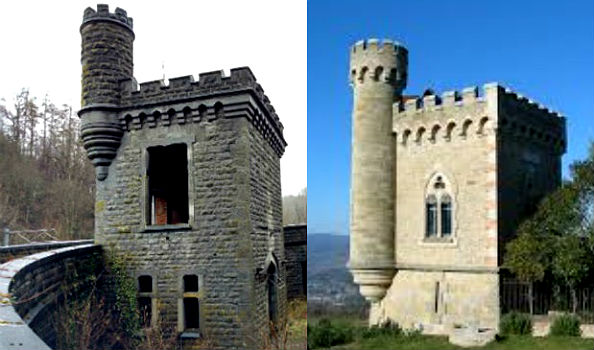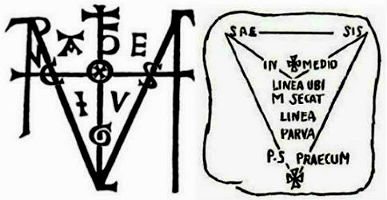More Failed Candidates Paul Smith 22 September 2016 Updated 26 September 2016
Researcher Chantal Ventenat has proposed a link between Bérenger Saunière, the Habsburgs, the tower at Halte Royale de Houyet in Belgium and a monogram resembling the Coume Sourde “stone”.
It is of course far more exciting to engage in these conjectures because there is nothing interesting about Saunière’s wealth originating from trafficking in masses. That’s a real bummer of a letdown to the colourful story of Rennes-le-Château.  The monogram that sort-of–resembles the Coume Sourde “stone” is not a close enough match, although it’s certainly possible that Philippe de Chérisey, who created the popular version of this pseudo-relic, modelled it on something similar to that.  Indeed, it has been plausibly suggested by Kris Darquis & Jacques Lefranc in their recent book that the popular version of the Coume Sourde “stone” could have been modelled upon the Roman Catholic symbol The Shield of Trinity. Philippe de Chérisey would simply have changed the Catholic words.  Below: Depiction of a Knight holding The Shield of Trinity preparing to battle the Seven Vices by the artist William Peraldus (1190-1271), from a 13th century manuscript (clickable)  |